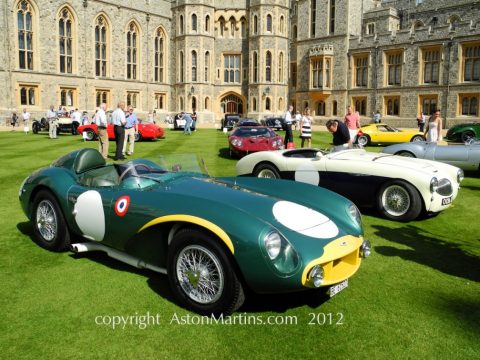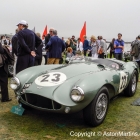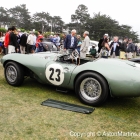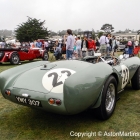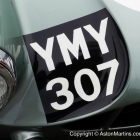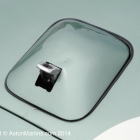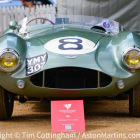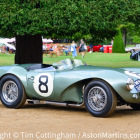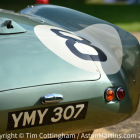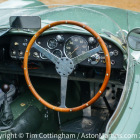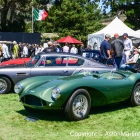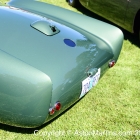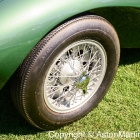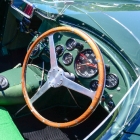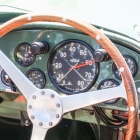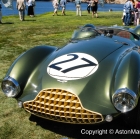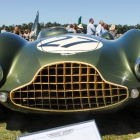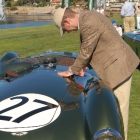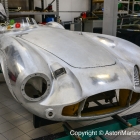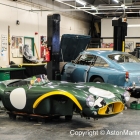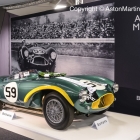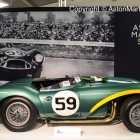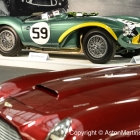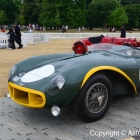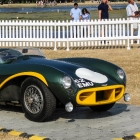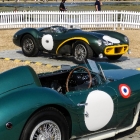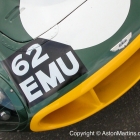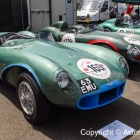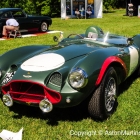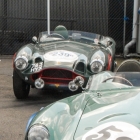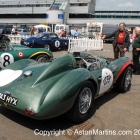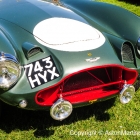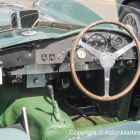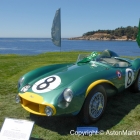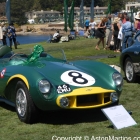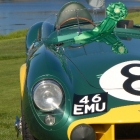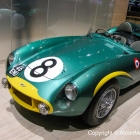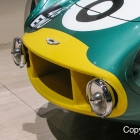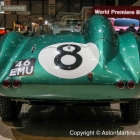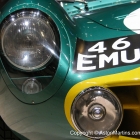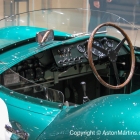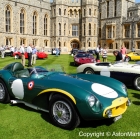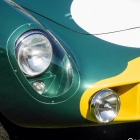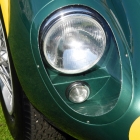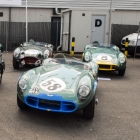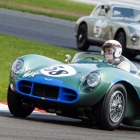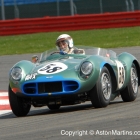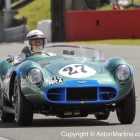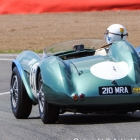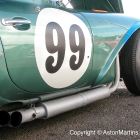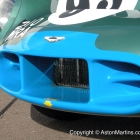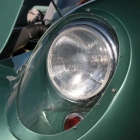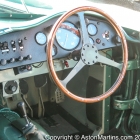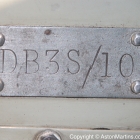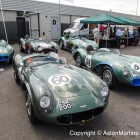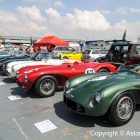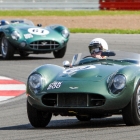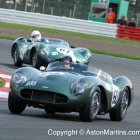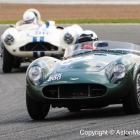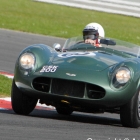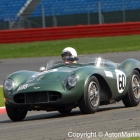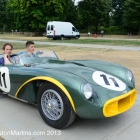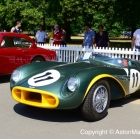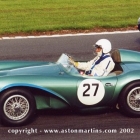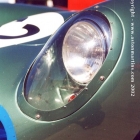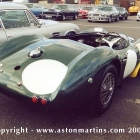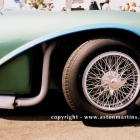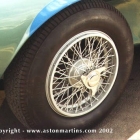There were three distinct body styles of the DB3S, the first of which had a large ‘egg crate’ style grille. The second body style is well illustrated by the production cars, which features a new grille which was eventually copied on the DB Mark III. And the third style, debuted in 1956 featured a new oval nose with faired in headlamps and the fitting of front disc brakes which required the characteristic offset wheel rims.
DB3S/1, YMY307
Below is the very first chassis, works car DB3S/1 , photographed at the 2013 Pebble Beach Concours where the car was awarded the Gran Turismo Trophy. This is awarded to the most significant car present balancing both artistic beauty and performance at the highest level.
DB3S/2, UDV609
The second car, DB3S/2 was on display at ‘The Quail, A Motorsports Gathering’ during the Centenary Year in 2013.
DB3S/4
This particular works car is the only DB3S that has retained the original Frank Freely front egg crate front grille. It was photographed during the Pebble Breach Concourse d’Elegence in 2007 when Aston Martin were the featured marque.
DB3S/5, 9056H
DB3S/6, 62EMU
Arguably the most successful of the works DB3S cars is chassis number DB3S/6, 62EMU, pictured below. Initially the car was built with a closed coupe coachwork unfortunately it crashed during the 1954 Le Mans race and the original body was destroyed. After being rebuilt for the 1955 season with open bodywork, the car came in 2nd at Le Mans. After being sold off by the factory, the car again achieved 2nd place at Le Mans in 1958 when owned by the Whitehead brothers. The interior displays a wonderful patina.
DB3S/7, 63EMU
Chassis number DB3S/7, and sister car to number 6 (seen above). Again originally built as a coupe and similarly crash at Le Mans in 1954. Also rebuilt with open bodywork for the 1955 season. After being sold off by the works following the 1956 season, DB3S/7 has continued competing in private hands.
DB3S/8, 743HYX
DB3S/9, 46EMU
Although 1956 also saw the introduction of the DBR1, the DB3S still also represented Aston Martin in major competitions. This is chassis number 9, together with number 10 were two new team cars for the year. Both cars feature an aerodynamic headrest not seen on earlier cars. At Le Mans in 1956, the car finished 2nd overall in the hands of Stirling Moss and Peter Collins and remained a team car for the following year also. DB3S/9, 46EMU, is often to be found at displayed as prestigious events such as the Aston Martin stand at the 2005 Geneva Motor Show, the 2012 Windsor Concours and the 2013 Aston Martin Centenary Celebration at Kensington Palace.
DB3S/10, 210MRA
This car pictured below is chassis number DB3S/10 built for the 1956 season alongside DB3S/9, the final team car and featuring the new style nose with faired in headlamps plus a streamlined head rest. Unfortunately it crashed out of the 1956 Le Mans 24 hour race. At one time the car was owned by Peter Livanos, who also owned AML during the mid 1980’s.
DB3S/11, CSK200
Although this car, featured below, chassis number DB3S/11, was built to full team car specifications in 1957, it was never actually raced by the factory and really shouldn’t be considered a team car at all. It is just featured here as it has a chassis number within in the same range as the 10 team cars and was to the same specification. Its early competitive showing was in the US and Australia, though thankfully for me, it’s now seen regularly in the UK at AMOC and similar classic car events.
The DB3S works cars were entered for races on 35 occasions. The results speak for themselves – 15 first places, 13 second places and 7 third places. But an outright victory at Le Mans eluded AML owner, David Brown, so Aston Martin went on to develop the DBR1.
In total, 30 examples of the DB3S were built, 10 were works cars, the remainder were sold to customers who wished to go racing.



